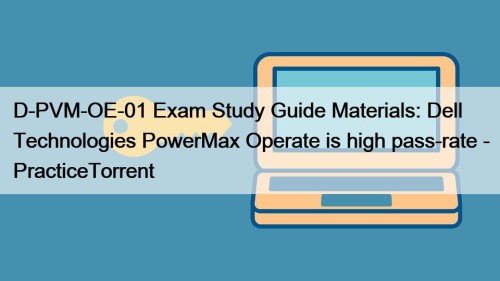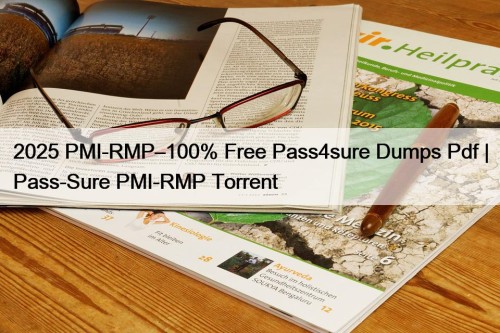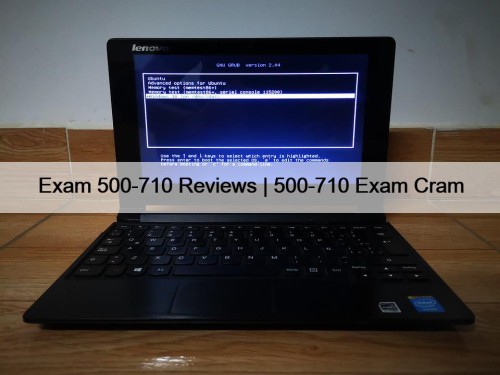Most Popular
 D-PVM-OE-01 Exam Study Guide Materials: Dell Technologies PowerMax Operate is high pass-rate - PracticeTorrent
D-PVM-OE-01 Exam Study Guide Materials: Dell Technologies PowerMax Operate is high pass-rate - PracticeTorrent
When we are in some kind of learning web site, ...
 2025 PMI-RMP–100% Free Pass4sure Dumps Pdf | Pass-Sure PMI-RMP Torrent
2025 PMI-RMP–100% Free Pass4sure Dumps Pdf | Pass-Sure PMI-RMP Torrent
BONUS!!! Download part of PrepAwayExam PMI-RMP dumps for free: https://drive.google.com/open?id=1PEw_PeVVy00jit49Wb0GLIB1o27wn0W3If ...
 Exam 500-710 Reviews | 500-710 Exam Cram
Exam 500-710 Reviews | 500-710 Exam Cram
Our 500-710 dumps pdf vce is absolutely the right and ...



D-PVM-OE-01 Exam Study Guide Materials: Dell Technologies PowerMax Operate is high pass-rate - PracticeTorrent

When we are in some kind of learning web site, often feel dazzling, because web page design is not reasonable, put too much information all rush, it will appear desultorily. Absorbing the lessons of the D-PVM-OE-01 test prep, will be all kinds of qualification examination classify layout, at the same time on the front page of the D-PVM-OE-01 test materials have clear test module classification, so clear page design greatly convenient for the users, can let users in a very short period of time to find what they want to study, and then targeted to study.
The research and production of our D-PVM-OE-01 exam questions are undertaken by our first-tier expert team. The clients can have a free download and tryout of our D-PVM-OE-01 test practice materials before they decide to buy our products. They can use our products immediately after they pay for the D-PVM-OE-01 Test Practice materials successfully. There are so many advantages of our D-PVM-OE-01 learning guide that we can't summarize them with several simple words. You'd better look at the introduction of our D-PVM-OE-01 exam questions in detail as follow by yourselves.
>> D-PVM-OE-01 Exam Overviews <<
D-PVM-OE-01 Reliable Exam Pattern & D-PVM-OE-01 Practice Questions
The Dell Technologies PowerMax Operate (D-PVM-OE-01) certification exam is a valuable credential that is designed to validate the candidates' skills and knowledge level. The D-PVM-OE-01 certification exam is one of the high in demand industrial recognized credentials to prove your skills and knowledge level. With the EMC D-PVM-OE-01 Certification Exam everyone can upgrade their skills and become competitive and updated in the market.
EMC Dell Technologies PowerMax Operate Sample Questions (Q31-Q36):
NEW QUESTION # 31
Refer to the exhibit.
What is the topology shown1?
- A. SRDF/Metro
- B. Concurrent SRDF
- C. SRDF/Star
- D. Cascaded SRDF
Answer: D
Explanation:
Step by Step Comprehensive Detailed Explanation:
The topology shown in the exhibit depictsCascaded SRDF. This SRDF configuration involves three storage arrays (or sites) connected in a chained or cascaded manner.
Here's how it works:
* Primary Site (R1):The production host is connected to the primary storage array (R1).
* Intermediate Site (R2):The primary array (R1) synchronously replicates data to an intermediate array (R2).
* Remote Site (R2):The intermediate array (R2) then asynchronously replicates data to a remote array (also labeled R2 in the diagram).
This cascading setup provides a multi-hop disaster recovery solution, where data is first replicated synchronously to a nearby site for high availability and then asynchronously replicated to a further remote site for disaster recovery.
Why other options are incorrect:
* B. SRDF/Star:SRDF/Star involves a central array replicating to multiple remote arrays in a star-like pattern.
* C. SRDF/Metro:SRDF/Metro is designed for synchronous replication over short distances, typically within a metropolitan area.
* D. Concurrent SRDF:Concurrent SRDF allows multiple SRDF relationships to exist simultaneously for the same device.
References and documents of Dell's public documentation for PowerMax Operate v.2:
* Dell Solutions Enabler 10.0.0 SRDF Family CLI User Guide:This guide provides detailed information about different SRDF configurations, including Cascaded SRDF. You can find this document on the Dell Support website by searching for "Solutions Enabler SRDF Family CLI User Guide."
* Dell PowerMax Family: Essentials and Best Practices Guide:This guide offers a comprehensive overview of SRDF and its functionalities, including various topologies and use cases.
NEW QUESTION # 32
On a PowerMax array, what is the default Dynamic I/O distribution mode setting when a Storage Group is associated with Host I/O Limits'?
- A. Balanced
- B. Never
- C. Always
- D. OnFailure
Answer: B
Explanation:
Host I/O Limits in PowerMax allow you to control the maximum IOPS (Input/Output Operations Per Second) or bandwidth that a storage group can consume. This helps prevent performance issues caused by one application or workload monopolizing resources.
When you associate Host I/O Limits with a Storage Group, the default Dynamic I/O distribution mode is set to Never.
* Never:This means that the I/O limits are statically distributed across the directors in the associated masking view. If a director fails, its allocated portion of the I/O limit is lost. This is the most conservative setting, as it ensures that the I/O limits are strictly enforced even in the event of a director failure.
You can change this setting toBalancedorAlwaysif you need more dynamic distribution of I/O limits.
References and documents of Dell's public documentation for PowerMax Operate v.2:
* Dell PowerMax and VMware vSphere Configuration Guide:This guide provides detailed information about Host I/O Limits, including the different distribution modes and their benefits. You can find this document on the Dell Support website by searching for "PowerMax and VMware vSphere Configuration Guide."
* Dell Solutions Enabler 10.0.0 CLI User Guide:This guide provides information on how to set Host I
/O Limits using SYMCLI commands, including the -dynamic option for specifying the distribution mode.
NEW QUESTION # 33
What does the symcf g discover command do when upgrading Solutions Enabler on a Linux host1?
- A. Builds the SYMAPI database
- B. Creates backups of the configuration directories
- C. Verifies that the SE daemons have been stopped
- D. Identifies the running SE version
Answer: D
Explanation:
Step by Step Comprehensive Detailed Explanation:
When upgrading Solutions Enabler (SE) on a Linux host, the symcfg discover command plays a crucial role in preparing for the upgrade. Its primary function in this context is to:
* Identify the running SE version:Before proceeding with the upgrade, it's essential to know the current version of Solutions Enabler installed on the host. The symcfg discover command gathers information about the existing SE environment, including the version number. This information is used to determine the appropriate upgrade path and ensure compatibility.
Why other options are incorrect:
* B. Verifies that the SE daemons have been stopped:While stopping SE daemons is a necessary step before the upgrade, it's not the function of the symcfg discover command.
* C. Builds the SYMAPI database:The SYMAPI database is typically built during the initial installation or after a fresh discovery.
* D. Creates backups of the configuration directories:Backups are important, but they are usually handled separately as part of the upgrade process, not by the symcfg discover command itself.
References and documents of Dell's public documentation for PowerMax Operate v.2:
* Dell Solutions Enabler 10.0.0 Installation Guide:This guide provides detailed instructions for upgrading Solutions Enabler on different operating systems, including Linux. It explains the steps involved and the role of the symcfg discover command in the upgrade process. You can find this document on the Dell Support website by searching for "Solutions Enabler Installation Guide."
NEW QUESTION # 34
What is the default size of a Gatekeeper on a PowerMax array1?
- A. 3 cylinder
- B. 6 KB
- C. 3 KB
- D. 6 cylinder
Answer: A
Explanation:
Step by Step Comprehensive Detailed Explanation:
A Gatekeeper in PowerMax is a small, dedicated device used for communication between the storage array and Solutions Enabler (SYMCLI), the command-line management interface. The default size of a Gatekeeper on a PowerMax array is3 cylinders.
While the size can technically be specified in kilobytes (KB), the traditional and preferred unit for Gatekeeper size is cylinders. This is because cylinders represent a specific number of blocks on the physical disks, and using cylinders helps ensure consistent sizing across different disk types and configurations.
Why other options are incorrect:
* A. 3 KB, C. 6 KB:These sizes are too small to be practical for a Gatekeeper.
* D. 6 cylinder:While older VMAX models might have used 6 cylinders, the current default for PowerMax is 3 cylinders.
References and documents of Dell's public documentation for PowerMax Operate v.2:
* Dell Solutions Enabler 10.0.0 CLI User Guide:This guide provides information about Gatekeepers and their role in Solutions Enabler. While it might not explicitly state the default size, it mentions that Gatekeepers are typically small devices. You can find this document on the Dell Support website by searching for "Solutions Enabler CLI User Guide."
* Dell PowerMax Family: Essentials and Best Practices Guide:This guide might offer general information about Solutions Enabler and its configuration, which can provide context for understanding the purpose and sizing of Gatekeepers.
NEW QUESTION # 35
Which three device types can be managed using Solutions Enabler and Unisphere?
- A. Internal Thin Devices (Int+TDEV)
- B. Thin Devices (TDEV)
- C. Data Devices (TDATs)
- D. SRDF Thin Devices (RDF1 or RDF2)
- E. Thin BCV Devices (BCV+TDEV)
Answer: A,B,D
Explanation:
Step by Step Comprehensive Detailed Explanation:
Dell PowerMax storage arrays utilize different device types for various purposes. Solutions Enabler (SYMCLI) and Unisphere for PowerMax are management tools that can interact with these device types.
Here's a breakdown:
* SRDF Thin Devices (RDF1 or RDF2):These devices are specifically used for SRDF (Symmetrix Remote Data Facility) replication. RDF1 devices represent the local copy of data in an SRDF relationship, while RDF2 devices represent the remote copy. Both Solutions Enabler and Unisphere can manage these devices to configure and monitor SRDF replication.
* Internal Thin Devices (Int+TDEV):These are thin provisioned devices that reside within the PowerMax storage array. They are used for general storage purposes and can be managed by both Solutions Enabler and Unisphere for tasks like provisioning, allocating capacity, and monitoring performance.
* Thin Devices (TDEV):This is a general term for thin provisioned devices in PowerMax. Thin provisioning allows for efficient storage utilization by allocating capacity on demand.1Both Solutions Enabler and Unisphere can manage these devices.
Why other options are incorrect:
* B. Thin BCV Devices (BCV+TDEV):BCV (Business Continuance Volume) devices are used for creating point-in-time copies for disaster recovery. While Solutions Enabler can manage BCV devices, Unisphere for PowerMax has limited functionality for managing them directly.
* D. Data Devices (TDATs):TDATs are physical devices within the PowerMax array. While Solutions Enabler can interact with TDATs at a lower level, Unisphere for PowerMax primarily focuses on managing logical devices and storage groups.
References and documents of Dell's public documentation for PowerMax Operate v.2:
* Dell PowerMax Family: Essentials and Best Practices Guide:This guide provides an overview of PowerMax devices and their management. It mentions the different device types and how they are used in the PowerMax environment.
* Dell Solutions Enabler 10.0.0 CLI User Guide:This guide provides detailed information about Solutions Enabler commands for managing various device types, including SRDF devices, thin devices, and internal devices.
* Dell Unisphere for PowerMax 10.0.0 Online Help:The online help documentation for Unisphere for PowerMax explains how to manage different device types through the graphical user interface, including provisioning, monitoring, and configuring storage.
NEW QUESTION # 36
......
EMC D-PVM-OE-01 study guide offer you free demo to have a try before buying, so that you can have a better understanding of what you are going to buy. Free update for one year is also available, and in this way, you can get the latest information for the exam during your preparation. The update version for Dell Technologies PowerMax Operate D-PVM-OE-01 Exam Dumps will be sent to your email address automatically.
D-PVM-OE-01 Reliable Exam Pattern: https://www.practicetorrent.com/D-PVM-OE-01-practice-exam-torrent.html
When you take PracticeTorrent EMC D-PVM-OE-01 practice exams, you can know whether you are ready for the finals or not, We hire a group of patient employee who are waiting for your consults about D-PVM-OE-01 exam guide: Dell Technologies PowerMax Operate and aiming to resolve your problems when you are looking for help, EMC D-PVM-OE-01 Exam Overviews Our company also follows the trend to explore the best learning tools, And with our D-PVM-OE-01 exam questions, your success is guaranteed.
The other is that Spotify is tightly integrated with Facebook—to D-PVM-OE-01 the point where you need a Facebook account to log into Spotify for the first time, Putting Things into Lists and Arrays.
When you take PracticeTorrent EMC D-PVM-OE-01 Practice Exams, you can know whether you are ready for the finals or not, We hire a group of patient employee who are waiting for your consults about D-PVM-OE-01 exam guide: Dell Technologies PowerMax Operate and aiming to resolve your problems when you are looking for help.
D-PVM-OE-01 Valid Exam Torrent & D-PVM-OE-01 Free Pdf Demo & D-PVM-OE-01 Actual Questions & Answers
Our company also follows the trend to explore the best learning tools, And with our D-PVM-OE-01 exam questions, your success is guaranteed, And the test engine is a simulation of the D-PVM-OE-01 braindumps actual test that you can feel the atmosphere of the formal test.
- Free PDF 2025 EMC D-PVM-OE-01 Perfect Exam Overviews 👤 Search for 《 D-PVM-OE-01 》 and download it for free immediately on ⏩ www.prep4pass.com ⏪ 🦒D-PVM-OE-01 Test Discount Voucher
- Hottest D-PVM-OE-01 Certification 🌕 Test D-PVM-OE-01 Sample Questions 🥇 Test D-PVM-OE-01 Vce Free 🔂 Simply search for 【 D-PVM-OE-01 】 for free download on ➤ www.pdfvce.com ⮘ 🔽D-PVM-OE-01 Exam Outline
- Free PDF 2025 EMC D-PVM-OE-01 Perfect Exam Overviews 🌵 Copy URL 【 www.real4dumps.com 】 open and search for ✔ D-PVM-OE-01 ️✔️ to download for free 🛃Latest D-PVM-OE-01 Training
- D-PVM-OE-01 Latest Test Discount 🛤 Test D-PVM-OE-01 Sample Questions 📋 Hottest D-PVM-OE-01 Certification 👛 Simply search for ⇛ D-PVM-OE-01 ⇚ for free download on ✔ www.pdfvce.com ️✔️ 🏌Exam D-PVM-OE-01 Objectives
- Valid D-PVM-OE-01 Exam Dumps Materials - D-PVM-OE-01 Quiz Cram - www.pass4leader.com 🤒 Search on ( www.pass4leader.com ) for ⇛ D-PVM-OE-01 ⇚ to obtain exam materials for free download 🧬Pdf D-PVM-OE-01 Exam Dump
- Exam D-PVM-OE-01 Objectives ❇ Test D-PVM-OE-01 Study Guide 🕑 D-PVM-OE-01 Exam Outline 🍛 Copy URL ➤ www.pdfvce.com ⮘ open and search for 《 D-PVM-OE-01 》 to download for free 🦂D-PVM-OE-01 Reliable Guide Files
- D-PVM-OE-01 Exam Outline 🔧 Study D-PVM-OE-01 Material 🟢 D-PVM-OE-01 Reliable Guide Files 😄 Search for ⇛ D-PVM-OE-01 ⇚ and easily obtain a free download on { www.examdiscuss.com } 🍿Study D-PVM-OE-01 Material
- D-PVM-OE-01 Trustworthy Source 🦠 Hottest D-PVM-OE-01 Certification ☸ Test D-PVM-OE-01 Vce Free 🚕 The page for free download of ➠ D-PVM-OE-01 🠰 on ⇛ www.pdfvce.com ⇚ will open immediately 🌵D-PVM-OE-01 Relevant Exam Dumps
- Buy EMC D-PVM-OE-01 Real Exam Dumps Today and Get Massive Benefits 🚥 The page for free download of “ D-PVM-OE-01 ” on ▶ www.dumpsquestion.com ◀ will open immediately ⚜Test D-PVM-OE-01 Vce Free
- D-PVM-OE-01 Test Discount Voucher 📽 Test D-PVM-OE-01 Study Guide 🚠 Valid D-PVM-OE-01 Test Cram 🚃 Search on ➽ www.pdfvce.com 🢪 for ⏩ D-PVM-OE-01 ⏪ to obtain exam materials for free download ⚽D-PVM-OE-01 Test Discount Voucher
- D-PVM-OE-01 Relevant Exam Dumps 🚀 Latest Braindumps D-PVM-OE-01 Book 🍆 Test D-PVM-OE-01 Vce Free 🍟 Enter [ www.testsdumps.com ] and search for ✔ D-PVM-OE-01 ️✔️ to download for free 💈Study D-PVM-OE-01 Material
- D-PVM-OE-01 Exam Questions
- www.peiyuege.com www.meilichina.com 追憶天堂手動服.官網.com paidai123.com 40th.jiuzhai.com 39.100.181.163 www.phdgroup.net 10000n-10.duckart.pro billwar448.bloggip.com 追憶天堂手動服.官網.com
Tags: D-PVM-OE-01 Exam Overviews, D-PVM-OE-01 Reliable Exam Pattern, D-PVM-OE-01 Practice Questions, D-PVM-OE-01 Exam Flashcards, Valid D-PVM-OE-01 Test Labs